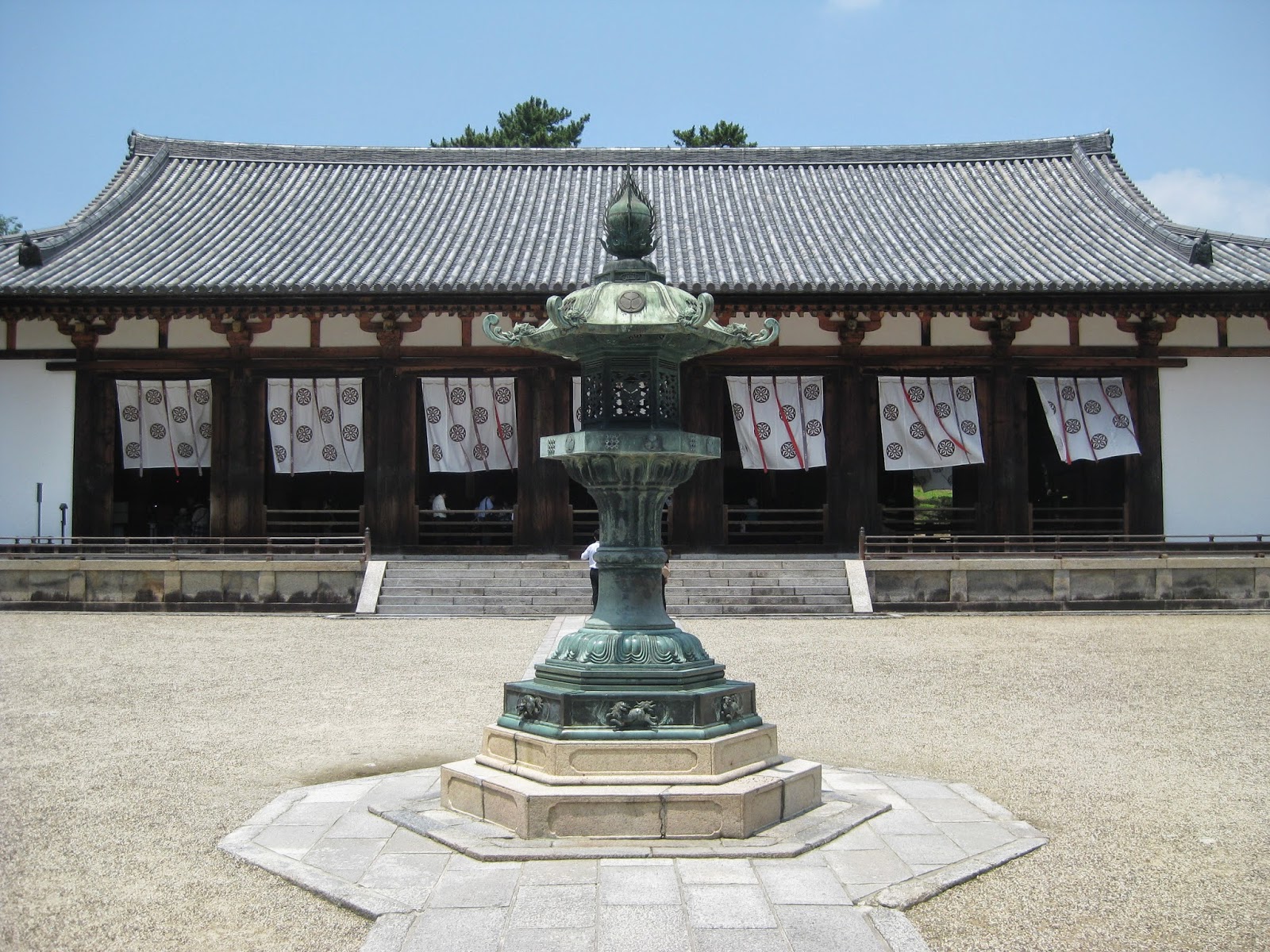The
bus is almost totally dark, the lights having been turned off so as not to
spoil the night view. In front of me, a female guide pours out a stream of
mostly unintelligible keigo, the
polite form of Japanese. As we ascend the mountain traffic officers with
flashing batons direct us to stop, and we wait for the oncoming vehicles to
pass on the narrow road. Nothing much is visible, but then a gap opens in the
tree line and an old Japanese woman erupts in appreciation: ‘Sugoi! Yahhhh! Mieru!’ Far below there
is a city built on a peninsula, its lights splitting the black emptiness of the
sea in two.
Hakodate,
the city on the peninsula, has a very interesting history. Notwithstanding its
situation at the southern tip of Hokkaido, the sparsely populated and most
northerly of Japan’s four main islands, it was one of the first ports to open
to foreign trade in the 1850s. Thus ended two and a half centuries of almost
complete isolation. A sense of Hakodate at the time can be gleaned from a
letter written by the governor of this outpost to Commodore Matthew Perry,
whose squadron of 5 American ships arrived in the harbour in 1854. The governor
described it as ‘an outlying, remote region’, ‘no bigger than a pill or a
speck’, with a ‘sparse and ignorant’ population. It ‘produces almost nothing’,
he wrote. Getting there from the capital took 30 days in summer, 37 in winter.
Now around
300,000 people call it home, and there are street signs in Chinese, Korean,
Russian and English. It’s famous for its squid, and produces perhaps the best
beer in Japan (try the Weizen at Hakodate Beer). Apparently, 4.3 million people
visited last year. Posters hanging from handsome street lamps announce
excitedly that the shinkansen, or bullet train, will be arriving in Hakodate in
2015. This costly development will cut the train journey from Tokyo to four
hours, shaving 90 minutes off the present travel time.
Still, in
this writer’s view, the way to arrive will always by ferry from Aomori, an inaka (rural) city on the north coast of
Honshu. The ship sails slowly northwards, passing between hilly peninsulas,
then across the Tsugaru straits, where the calm waters of the bay give way to
open sea. Soon a dark bump appears far in the distance: Mount Hakodate. For a
long time the city is concealed behind its bulk, and it’s only as you near the
mountain that it comes into view.
It is the longstanding
international connection that gives Hakodate its appeal. The city’s Motomachi
district, at the foot of the mountain, is celebrated for its attractive
European and North American-style buildings. These are a wonderful counterpoint
to the awful post-war architecture found with such depressing frequency in
other Japanese cities. (In truth, the modern parts of Hakodate itself suffer
from the same problem.) Best of all is the yellow and greyish blue Old Public
Hall, which brings to mind a plantation house in Gone with the Wind or 12 Years
a Slave, with its gables, second floor veranda and decorative parapet. Visit
during the day and you may see Japanese women dressed as southern belles.
As is true
of all Japanese cities, the best time to walk the streets of Hakodate is in the
evening, when the atmosphere in Motomachi is tremendous. The steep streets are
devoid of people, the Victorian-style street lamps are illuminated and the
city’s trams, with their wooden floorboards, clunk slowly over cracked roads
between the train station and the mountain. Hundred year old buildings like the
former British Consulate are lit up. It feels like a miniature San Francisco, but
without the homeless problem and with the added appeal of a ropeway that
travels through the night sky to the top of the peak.
On the
mountainside, past Motomachi and what was once allegedly a gay quarter, there
is a small sloping enclosure surrounded by a rusty white railing. It looks out
onto the bay, and the land beyond. At the back small American flags have been
placed in the turf beside a pair of humble and weather-beaten gravestones. It’s
a reminder that this has long been an international city, a rare thing
in this insular nation.











